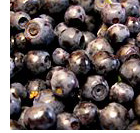
Not a subscriber?
Unsubscribe
Update e-mail address
March 2012 [Volume 11, Issue 3]
To Your Health is brought to you by:
In this issue of To Your Health:
The Big C: What Are You Doing About It?
By Marlene Merritt, DOM, LAc, ACN
 It is the rare to meet a person these days that doesn't have a concern about cancer. Between the constant headlines, to pink ribbons on everything from planes to phones, to hearing that Aunt Stacy was just diagnosed, it is impossible to not be aware of cancer's presence. The question is, what are you doing to actually prevent getting a cancer diagnosis? Or if you were diagnosed in the past, that you don't get it again?
It is the rare to meet a person these days that doesn't have a concern about cancer. Between the constant headlines, to pink ribbons on everything from planes to phones, to hearing that Aunt Stacy was just diagnosed, it is impossible to not be aware of cancer's presence. The question is, what are you doing to actually prevent getting a cancer diagnosis? Or if you were diagnosed in the past, that you don't get it again?
Because if you're like most people, you're not doing much in the way of prevention — mostly we just hope we can escape a diagnosis. Don't be fooled into thinking that doing regular mammograms is helping — statistics have clearly shown that the mammogram is being oversold in its value.
Women who believe "a mammogram saved my life" have not, in fact, been spared — a study published this past October concluded that instead, women are diagnosed early, or over diagnosed. The P.S.A. test, as another example, has also been shown to not save lives, and leads to increased testing and treatments, and needless pain, impotence and incontinence. Additionally, early detection and screening are not prevention, despite how often people confuse the two.
Herb of the Month – Bilberry (yue ju)
 What is bilberry? What is it used for?
What is bilberry? What is it used for?
Bilberry is a small shrub-like plant native to western Europe and North America. It is known by a variety of names, including the whortleberry and the European blueberry. Both the leaf and the fruit are used in herbal remedies; however, different parts of the plant have different properties.
Bilberry has been used in traditional European medicine for nearly 1,000 years. Traditionally, it was used an astringent to treat conditions like diarrhea and dysentery. Today, bilberry fruit is still used as an astringent, particularly in children, and also to treat mild inflammation of the mouth and throat.
Some research suggests that bilberry fruit extracts may treat certain circulatory disorders, and protect and improve vision, especially in diabetics and the elderly. Other studies suggest that extracts of bilberry leaf can control levels of LDL cholesterol in the blood and fight chronic fatigue syndrome.
How much bilberry should I take?
The recommended daily dosage of bilberry is 20 to 60 grams of dried fruit, taken internally and depending on the condition being treated. For bilberry powder, 4 grams per day is recommended. Bilberry syrup can also be added to water for a decoction.
What forms of bilberry are available?
Bilberry is available in raw, capsule, powder and decoction forms.
What can happen if I take too much bilberry? Are there any interactions I should be aware of? What precautions should I take?
Bilberry fruit has been given a class 1 rating by the American Herbal Products Association, which means that it can be safely consumed when used appropriately. There are no known side-effects or interactions with bilberry fruit.
As for bilberry leaf, the AHPA has given it a class 4 rating, meaning there is insufficient data to determine exactly how safe it is. Anecdotal evidence suggests that chronic use of bilberry leaf at high doses may cause adverse side-effects, but more research must be conducted before a definitive link can be established.
As always, make sure to consult with a licensed health care provider before taking bilberry fruit, bilberry leaf, or any other herbal remedy or dietary supplement.
Question about Cosmetic Acupuncture: Years ago I had a facelift performed by an acupuncturist and I was very pleased with the results. Can you tell me what points are used in a facelift?
Answer: There are different protocols for this treatment. An acupuncture facelift is not the same as a surgical one. Acupuncture facelifts tone tissues and enhance circulation, to give the patient's appearance a youthful glow. When done properly, the individual lines and creases are examined and then the pins are placed in the points that will minimize the wrinkle or crease. Pictures can and are taken of "before" and "after" for comparison. To tell you your individual points, I need to examine you. You can see an acupuncturist in your area and he/she can show you the points for your appearance.
Unsubscribe
Thank you for subscribing to To Your Health. If you have received
this newsletter in error or wish to unsubscribe, you may remove your name
from our e-mail subscription list at www.acupuncturetoday.com/newsletter/TYH/unsubscribe.php.
Update your e-mail address
To update the e-mail address your newsletter is sent to, click here.
If you have any questions regarding your subscription, please complete this form at www.acupuncturetoday.com/newsletterhelp/TYH.
